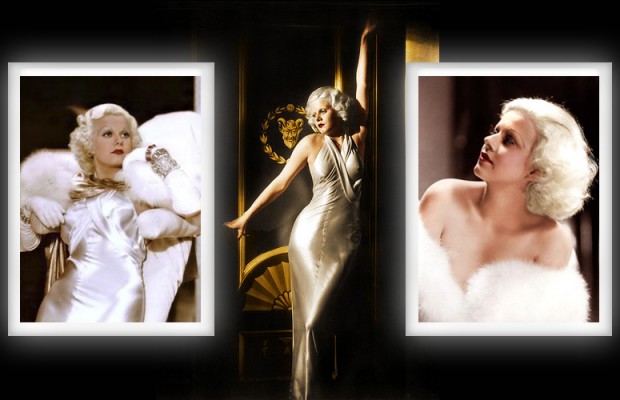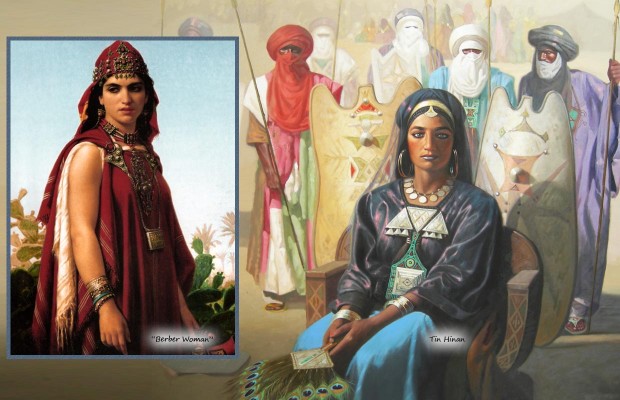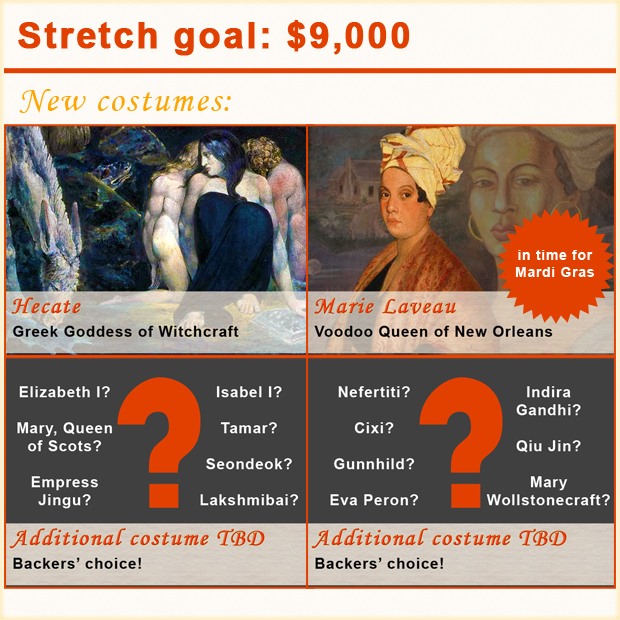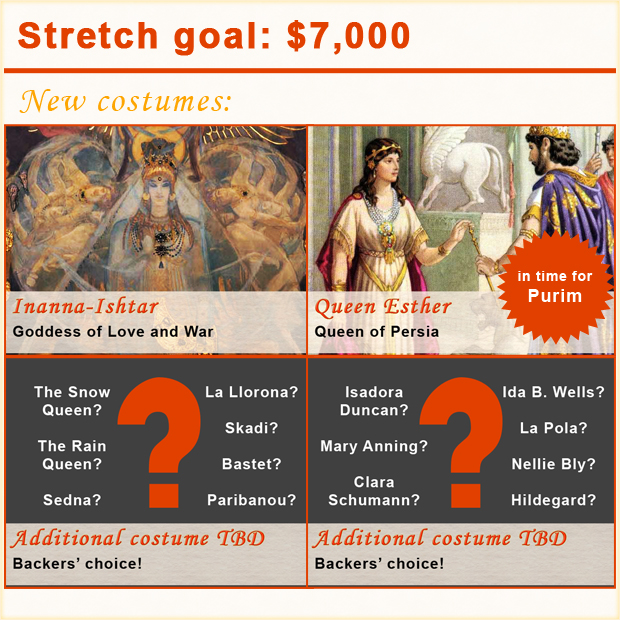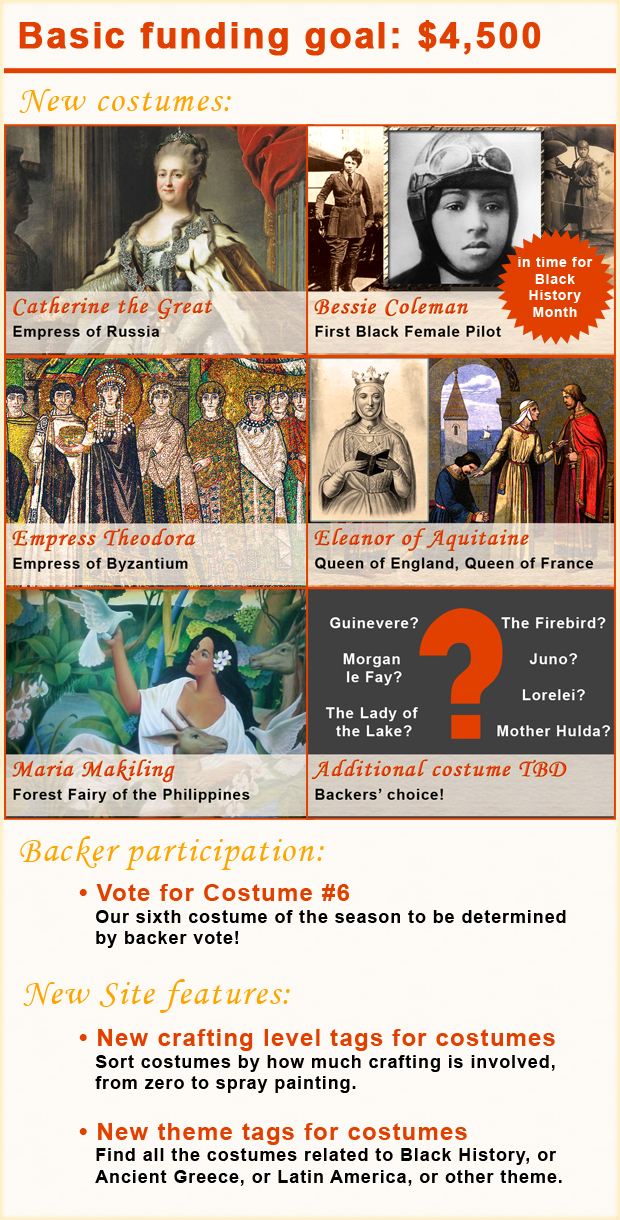In the final run-up to Halloween, we’re offering tips on how to do last-minute, stripped-down versions of some of our popular costumes.
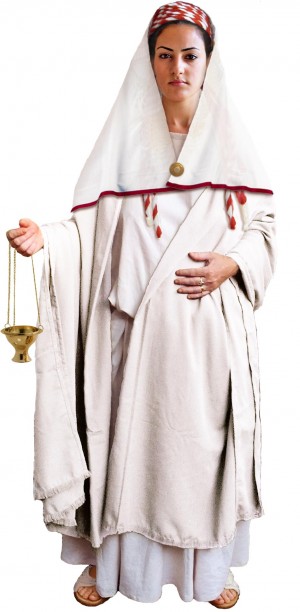 Our Vestal Virgin outfit is the bedsheet costume to end all bedsheet costumes. It’s almost nothing but sheets. Plain white sheets. The only other thing you need is a scrap of something red to tie around your head: red yarn, a red scarf, a strip of red fabric.
Our Vestal Virgin outfit is the bedsheet costume to end all bedsheet costumes. It’s almost nothing but sheets. Plain white sheets. The only other thing you need is a scrap of something red to tie around your head: red yarn, a red scarf, a strip of red fabric.
Our full-blown Vestal Virgin costume is shown at right. Here’s the last-minute version:
- If you have two white flat sheets, you can pin them together as an Ionic chiton (tunic). If you have only one flat sheet, you can fold it around you as a Doric chiton. The instructions for both kinds of chiton are on our Hypatia page (which, by the way, is another bedsheet costume suitable for last-minute styling). If you can’t manage the chiton thing, just wear a long white dress—like a maxi dress, a lounger, even a plain nightgown.
- Take another white sheet and drape it around your shoulders as a big shawl.
- Tie a piece of red something around your head. A red scarf, some red yarn, anything red.
- Drape another piece of white material over your head as a veil. A white pashmina, a white curtain panel, even a white pillow case with the seams opened up.
And that’s it. You’re now a Vestal Virgin, one of the highest-ranking women in all of Rome. You can sit at the right hand of the emperor, travel in a litter accompanied by bodyguards, and even do something no other woman could ever dream of doing: vote.
In the final run-up to Halloween, we’re offering tips on how to do last-minute, stripped-down versions of some of our popular costumes.
If you have an evening gown—a prom dress, a bridesmaids dress, any kind of formal—you can go as one of our Glamour Grrls. The trick is just to match the gown you already have with a movie star from the right era. And you’re not limited to the celebrities in our Glamour Grrl category; you can pick any movie star or entertainer.
For example:
- If you have a dress that looks like it could be from the 60s (maybe a narrow sheath), go as Audrey Hepburn or Diana Ross.
- If you have a gown that looks like it could be from the 50s (full skirt, tight waist), go as Grace Kelly or Dorothy Dandridge. (You can also do Dorothy Dandridge’s Carmen Jones look with just a red skirt and a black top.)
- If you have a black strapless gown, go as Rita Hayworth in Gilda.
- If you have something slinky and cut on the bias, go as 30s stars Jean Harlow or Josephine Baker.
- If you’re a curvy woman and you have a form-fitting gown, go as Mae West.
Pick your star based on the dress you have, and then pile on the makeup and jewelry to bump up your look to red-carpet level.
Accessories are good too. You can get a feather boa at any craft store or party store; you can also probably get a cigarette holder. Opera gloves are always glamorous. And if you have a piece of faux fur you can use as a stole, go for it.
In the final run-up to Halloween, we’re offering tips on how to do last-minute, stripped-down versions of some of our popular costumes.
 Here’s the thing about pirates: most of ’em wore rags. Their clothes were a wild mishmash of stolen loot, cast-offs, stuff they’d sewn themselves, and old clothes they’d been wearing since junior high (if pirates had junior high).
Here’s the thing about pirates: most of ’em wore rags. Their clothes were a wild mishmash of stolen loot, cast-offs, stuff they’d sewn themselves, and old clothes they’d been wearing since junior high (if pirates had junior high).
So putting together a last minute pirate costume is just a matter of embracing your inner hobo and raiding your closet. Or possibly the closet of a convenient male relative or friend.
Our full-blown Mary Read costume is at right. Here’s what we suggest for a last-minute version:
- Skip the tricorner hat. You don’t need it. You know what pirates wore a lot of the time, maybe even most of the time? A knit hat. Yep. It’s true: pirates were the first hipsters. And if you don’t have a knit hat, just tie a bandana around your head and go full Depp.
- Wear a man’s shirt. Stripes, checks, and solids are all good. If it’s an old shirt and you can get away with it, cut the collar off for a more 18th century look.
- Optional: if you have an old jacket or blazer that you can destroy, cut the sleeves off. Instant waistcoat. Any other kind of old raggedy vest could also work. If you have a pea coat or a short jacket, you could also wear that. But it’s okay if you don’t have any of those things. Just a shirt is fine.
- Wrap some material around your waist as a sash. Any kind of material: a cut-up sheet, some rags, a scarf, anything.
- Sling a wide leather belt across your torso as a baldric. Fasten another wide leather belt around your waist. Neither one needs to actually have a hilt or holster for weapons; just the look of the leather belts is enough.
- Wear cropped pants or cut off an old pair of pants at the knee.
- Wear white knee socks with flat shoes. This is what most pirates wore all the time, not boots.
- Optional: stop by the drugstore or pharmacy aisle and get a plain black eyepatch. For some reason an eyepatch is the International Symbol for pirates, so this will help cement your identity.
And there you go. You’re a pirate.
In the final run-up to Halloween, we’re offering tips on how to do last-minute, stripped-down versions of some of our popular costumes.
Do you have any blue sheets? How about some blue curtain sheers, or maybe a blue shawl or scarf? If so, you can be Tin Hinan.
Tin Hinan was the semi-legendary matriarch and queen of the Tuareg people. She’s believed to have lived in the fourth century in Roman North Africa. Here’s what you need:
- Take a blue bedsheet (any shade of blue) and wrap it around you as a chiton (tunic). The chiton instructions are on the Tin Hinan page. It’s just a bedsheet and safety pins.
- Drape a blue curtain sheer (any shade of blue) over your head or just around your body in a dramatic fashion.
- Pile on all the metallic jewelry you can find. Bangles, bracelets, necklaces, everything.
- Rim your eyes in black eyeliner and wear blue-black lipstick.
And that’s it! You’re Tin Hinan.
More inspiration, courtesy of YouTube:
In the final run-up to Halloween, we’re offering tips on how to do last-minute, stripped-down versions of some of our popular costumes.
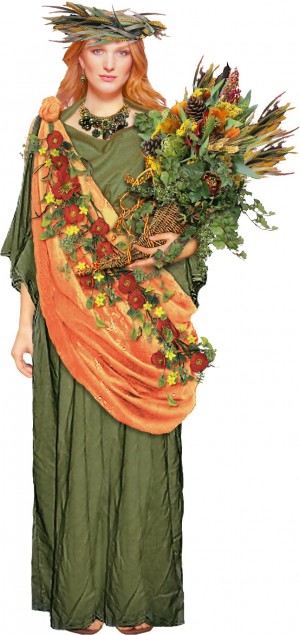 Do you have a sheet? Do you have food? Can you get some leaves (the kind that grow on trees)? If at least two of those things are true, then you can be Demeter, the goddess of the earth and the bountiful harvest.
Do you have a sheet? Do you have food? Can you get some leaves (the kind that grow on trees)? If at least two of those things are true, then you can be Demeter, the goddess of the earth and the bountiful harvest.
Our full-blown Demeter costume is shown at right. Here’s the last-minute version:
- Take a bedsheet of any color and wrap it around you as a chiton. It doesn’t have to be green. (The chiton instructions are on the Demeter page. It’s just a bedsheet and safety pins.)
- Get some leaves (fake or real) and stick them on your head.
- Look in your refrigerator or stop by the grocery store and get some pretty produce—maybe a bunch of grapes, an eggplant, some leafy stuff, a pomegranate, an apple. Maybe get a nice looking baguette, too, for the wheat angle. Arrange this stuff in a basket (of any shape) and carry it with you.
Alternatively, you could pile up some Halloween candy in your basket and carry that.
Ta da! You’re Demeter.
You can add flowers to your outfit if you want (in your hair, in your basket, on your clothes), and pin additional leaves on yourself. It’s easy. Just think of yourself as an ancient Greek Mother Nature. And except for the bedsheet, you can get everything you need at the grocery store.
Can you believe it? This is stunning. Thanks to the incredible outpouring of support for this project, we zoomed past our first stretch goal—Operation Ishtar—in only three days. Ishtar and Esther are booked! Thank you!!!
Now we’re into our second stretch goal. In the continuing spirit of total nerddom, we’re calling it:
Operation Hecate. (Imagine dark, atmospheric music.)
Our goal with Operation Hecate is to hit $9,000. That will fund four more costumes, including of course the amazing Hecate:
We’re very excited about this goal, because these costumes will be flat-out fantastic:
- Hecate: the goddess of the crossroads, strongly associated with magic and sorcery. But she’s not evil: the ancients also revered her as a Great Goddess, and in some places she was worshipped as a protective household deity.
- Marie Laveau: one of the most mysterious figures in American history, Marie Laveau was a powerful Voodoo priestess whose legend still haunts New Orleans.
- Two more wild card costumes: backers will get to vote from our full list of possibilities, and we’ll also open the floor to more suggestions!
The outpouring of love for this project just goes to show how much pent-up demand there is for an alternative to Sexy Hamburger costumes. (Sexy Hamburger? Really?) Thanks to all of you for helping us bring diverse, creative, empowering costumes back to Halloween!
Thanks to our wonderful backers, we’re now into the stretch goal phase of our Kickstarter. And because we’re total nerds, we have a name for it: Operation Ishtar.
So, welcome to Operation Ishtar!
The outpouring of enthusiasm for our project (and btw, we were just linked by Amy Poehler’s Smart Girls, which is the coolest thing ever) means that we’ve blown past our initial goal and are now into stretch goal territory. And that means more amazing costumes!
Our goal with Operation Ishtar is to hit $7,000, which will unleash all kinds of awesome:
Think of it!
- Inanna-Ishtar: the Ur-Goddess, the amazing Sumerian Queen of Heaven who was worshipped for 4,000 years, and whose image lives on in countless ways.
- Queen Esther: the heroine of the Biblical Book of Esther, whose story is celebrated every year at Purim. People have been asking us for a Queen Esther costume since we started; now’s our chance!
- Two more wild card costumes: backers will get to vote from our full list of possibilities—from Nefertiti to Elizabeth I, from Guinevere to La Llorona, from Ida B. Wells to Isadora Duncan.
Thanks to all of you for helping to bring diverse, creative, empowering costumes to women and girls. Thank you for helping us Take Back Halloween!
What an incredible day this has been! Exactly two weeks ago we launched our Kickstarter to fund the next year of Take Back Halloween.
And today, less than halfway through our Kickstarter campaign, we reached 100% our initial goal!
We’re doing the happy dance of joy, because now we know we’ll be able to bring you another year of creative and empowering costumes. We’re thrilled and grateful and frankly just beside ourselves with relief and happiness.
You know what this means? This means that not only will we still be here, but we’ll be bringing you these awesome new costumes:
- Catherine the Great
- Bessie Coleman
- Eleanor of Aquitaine
- Empress Theodora
- Maria Makiling
- Wild card costume — backers get to vote!
And on top of that…
A very special and wonderful backer (you know who you are and we LURVE you) has stepped up to commission a seventh costume!
Thank you, all of you, for helping to make this happen. We are so honored and grateful.
And you know who else is grateful? The girls who rely on our site but can’t necessarily afford to support us. Just last night I got an email from a young girl who is only 15 and can’t afford to pledge, but has been hoping and praying we would get funded. She says our site means “so much” to her. I get emails like that a lot; we have many, many fans among the younger set.
What’s fantastic is that we still have more than two weeks to go in our Kickstarter (I can hardly believe it as I type it), which means that we can think seriously about those stretch goals. I’ll talk about those more tomorrow.
For now, we’re just going to say a huge THANK YOU to all of you who made this happen. Thank you for believing in us and supporting our vision.
October is off to a great start here in the land of Take Back Halloween. Our first week on Kickstarter has been fantastic, thanks to our wonderful community. We’re already 46% of the way towards our goal!
We’ve already gotten some very early media coverage:
- Halloween costume website announces new resource guides, contest and fundraising — a great roundup from the Examiner
- Racy, Sexy, and Culturally Appropriate-y: It’s Halloween Again, Folks! — don’t worry, we’re listed as one of the good guys
- Disappointed in the lack of variety/material in women’s Halloween costumes? — an amazing post from Chicken Noodle Love Box that’s tearing it up on Tumblr
We’ll be getting more press coverage as October rolls on. In the meantime, share these links with your friends, share our Kickstarter project on Twitter/Facebook/Tumblr, and help spread the word!
Thank you all so much for helping us Take Back Halloween.
Tomyris (6th century BCE), the warrior queen of the Massagetae, was the woman who defeated and killed Cyrus the Great. In revenge for Cyrus’s trickery and the death of her son, Tomyris led her troops into battle against the Persians, routing them in what Herodotus described as the fiercest battle the “barbarians” had ever engaged in (they were all barbarians to Herodotus). Tomyris famously had Cyrus’s corpse beheaded and his skull made into a drinking cup. Or so the story goes.
Whatever the details of Cyrus’s death, the fact is that there were very definitely warrior women and queens among the ancient Iranian tribes of the Eurasian steppes, including the Massagetae. So we’re going to dress Tomyris as the warrior woman she was, basing our design on the excavated clothing from tomb burials. The illustrations above (by Angus McBride) show a noblewoman; a queen would probably have more bling and some gold armor.
Fortunately, the basic steppe costume of tunic + pants survives in many cultures across the continent, especially South Asia. The pieces we suggest:
1. Cotton kurti. Look for one like this that has a simple design—no modern prints—for an archaic look. Add leggings or narrow narrow trousers that will fit into boots (next).

2. Bearpaw boots in iced coffee.

3. Phrygian cap. Yes, it’s really a Robin Hood cap, but you’re going to turn it around so the point faces forward. That will make it a Phrygian cap, which is what the steppe tribes wore.
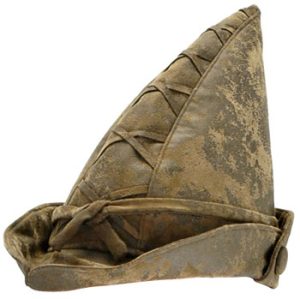
4. Short sword with sheath. At 19 inches long, this can serve as an excellent stand-in for the acinaces, the Scythian short sword. This one even comes with a handy strap so you can loop it onto your belt. (Wear a leather belt.)
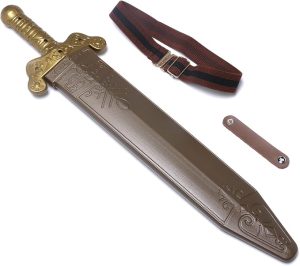
5. Gold armor wristlets. You are a warrior, after all. And a queen.

6. Skull drinking cup. Yes, it’s supposed to be a Viking piece from a millennium and a half later, but the Scythians were also great metal workers, so we’ll let it slide. Carry this cup with you and tell everyone it’s the skull of Cyrus the Great. (This might not be a good idea if there will be any Persians at your party.)

Yesterday we launched our new Kickstarter campaign, timed to run through the witching season (aka the month of October). We’re raising funds for a new year of Take Back Halloween, so that we can continue to make the world safe for creative and empowering costumes:
The popularity of our site (did you know that we’re ranked #1 in Google for dozens of important women in history and mythology?) means that our costs have ballooned since last year. It is getting very expensive just to host the site. So we’ve divided our project into a basic funding goal, which is the minimum we need to guarantee a new season of costumes, and stretch goals to add more costumes.
Our basic funding goal will allow us to add six more costumes, with one of them to be voted on by our Kickstarter backers. We’ll get the Bessie Coleman costume ready in time for Black History Month in February, and then do the vote for the sixth costume following Women’s History Month in March. The rest of the costumes will debut at various points in the spring/summer of 2014.
We’re also going to add some new site features to help people sort through our 80+ costumes:
We will be thrilled just to raise enough money for the basic season. If we somehow raise more than that, we’ll add more costumes, with even more opportunities for backer input. Here’s a preview of the stretch goals we have in mind, just in case we get there:
Rewards
It wouldn’t be a Kickstarter without rewards: the goodies that backers get for helping to fund a project.
All our backers will be enrolled in the Voting List, which means you get to vote on the new costumes. You’ll also receive our monthly newsletter with updates throughout the year.
For more tangible rewards, we’ve created a variety of small posters (8×10 and 11×14), available both as digital downloads and as professionally printed physical posters. These fit right into standard frames and mats, and make wonderful gifts. We’ll be shipping all of them in time for the holidays.
We have previews of the posters here on our website, since it’s not possible to upload really big images at Kickstarter: Poster Previews.
We also have a few commemorative pinback buttons left for those of you collecting them. They’re available at the Button Collector/Named Sponsor tier ($65) and above. The buttons are very limited, so for non-button collectors at the $65 level we’re offering an extra poster print.
At the Mojo Angel tier ($115), we’ll send you one of our larger 18×24 posters. We have two designs at that size: the Timeline of Women in World History and our new Goddess poster.
Once again we’re offering our super-generous backers the opportunity to commission a costume. If you’d rather commission a poster, we can do that too.
Here’s the whole scheme at a glance:
So head on over to our Kickstarter project page to read more, make a pledge, and help us take back Halloween!
Note: Winners have been posted here.
Our costume contest last year was such fun that we’re going to do it again this year. And this time with more prizes!
We’re thrilled to announce that five Amazon gift certificates have been donated for our costume contest this time. That means we can offer a prize in each of our costume categories, plus a Grand Prize for the best costume overall.
So whether you’re dressing up as Baba Yaga or Diana Ross or Grace O’Malley or Hypatia or any of the women in our costume categories, send us your pictures for a chance to win!
Prizes
Best Notable Woman Costume = $25 Amazon gift certificate
Best Queen Costume = $25 Amazon gift certificate
Best Glamour Grrl Costume = $25 Amazon gift certificate
Best Goddess or Mythological Figure Costume = $25 Amazon gift certificate
Grand Prize for Best Costume Overall = $50 Amazon gift certificate
Rules
1. The photo(s) must be of you or a friend or family member in costume. If the photo is of a friend or family member, you must obtain their permission to submit it. You’ll need to tell us their name as well as yours, and note what your relationship is (sister, daughter, etc.).
2. The costume doesn’t have to be inspired by one of our Take Back Halloween designs, but we are more inclined to be impressed by one that is. The costume does need to fall into one of our four categories: a notable woman from history, a queen, a glamorous star, a goddess or mythological figure.
3. Please tell us what the costume is, in case we are too dense to figure it out.
4. The costume may be from this year or any previous Halloween.
5. You may enter more than once, if you have multiple costumes you want to share.
6. By submitting your photo, you are giving us permission to publish it on the Take Back Halloween website and on our Facebook page. You can send in multiple photos if you’re not sure what the best one is or if you need several angles to reveal the full glory of the costume.
7. Submissions should be emailed to contest@takebackhalloween.org.
8. The deadline for submissions is 11:59 pm EST on Friday, November 8, 2013.
Check out our 2013 Costume Contest album on Facebook to see the entries we’ve uploaded so far. We expect to publish the winners the week of November 11, 2013.


